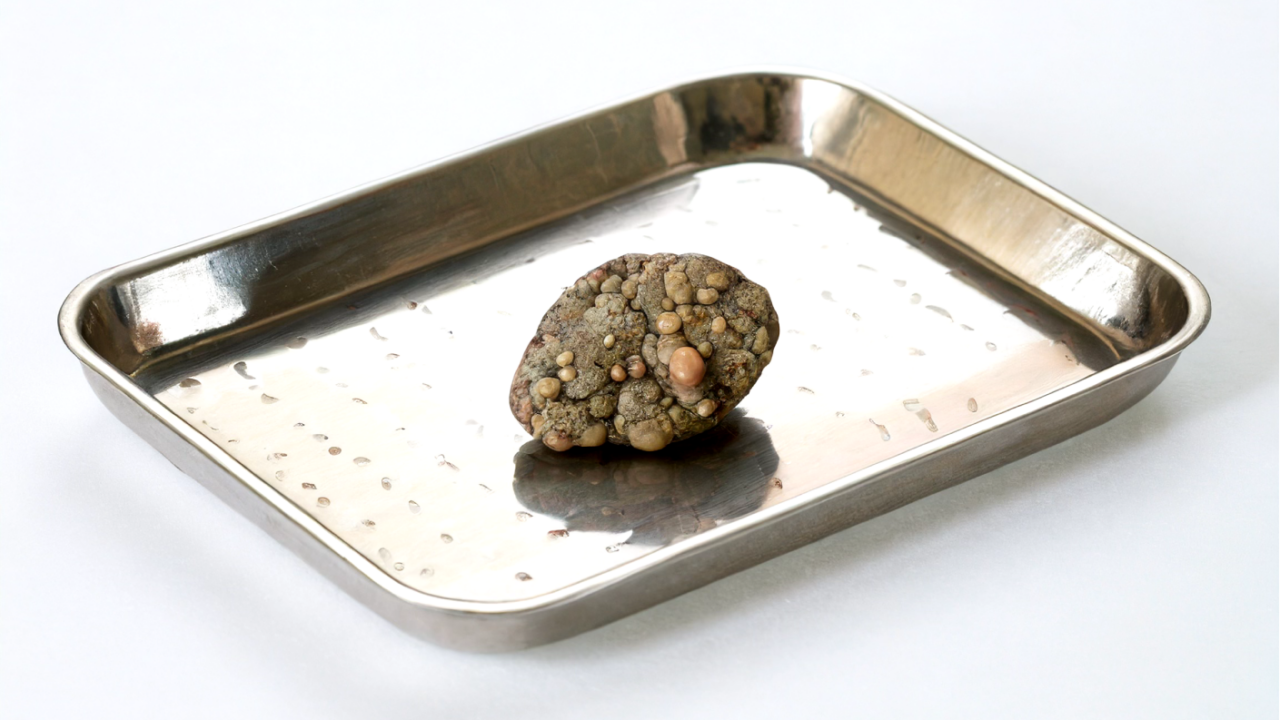Gallstones, those pesky intruders that can disrupt the smooth functioning of your gallbladder, are more common than you might think. They’re small, they’re troublesome, and they have a complex composition that can cause quite the stir in your digestive system. Whether you’re a curious learner, someone recently diagnosed with gallstones, or a caring friend or family member, understanding what gallstones are and what they’re made of can demystify these small but significant health nuisances. Let’s dive into the gritty details.

1. Gallstones: A Rocky Formation
Imagine small pebbles forming inside your gallbladder, a small organ tucked under your liver. That’s essentially what gallstones are—hardened deposits that can vary in size, from as small as a grain of sand to as large as a golf ball. The gallbladder’s primary role is to store bile, a digestive fluid produced by the liver. Sometimes, however, the components of bile can crystallize and bind together, forming these stones that can lead to pain, infections, and other serious conditions.
2. What’s in a Gallstone? The Chemical Make-Up
Gallstones mainly come in two types, each with a different composition:
- Cholesterol Gallstones: These are the most common type, accounting for about 80% of all gallstones. Despite their name, they are not made purely of cholesterol. They actually consist mostly of hardened cholesterol but can also contain other substances like calcium and bilirubin that have precipitated out of the bile.
- Pigment Gallstones: These stones are smaller and darker and are made up of bilirubin—a substance produced from the breakdown of red blood cells. Pigment gallstones are more common in individuals with certain medical conditions, including liver disease and certain types of anemia.

3. Why Do Gallstones Form?
Several factors contribute to the formation of gallstones:
- Supersaturation of Bile: If your liver excretes more cholesterol than your bile can dissolve, the excess cholesterol may crystallize, leading to cholesterol stones.
- Improper Emptying of the Gallbladder: If your gallbladder doesn’t empty completely or often enough, bile may become very concentrated, which also contributes to gallstone formation.
- Increased Bilirubin: Conditions that lead to an overproduction of bilirubin can lead to pigment stones.
4. Symptoms and Detection: What to Watch For
Many people with gallstones experience no symptoms and may never need treatment. However, if a gallstone blocks a bile duct, it can cause symptoms such as:
- Sudden and rapidly intensifying pain in the upper right portion of your abdomen
- Back pain between your shoulder blades
- Pain in your right shoulder
- Nausea or vomiting
These symptoms necessitate medical evaluation, which often involves an ultrasound or other imaging techniques to visualize the stones.

5. Managing and Treating Gallstones
If gallstones are symptomatic, treatment may involve medication to dissolve the gallstones or surgery to remove the gallbladder. In many cases, removing the gallbladder is the most effective way to prevent gallstone-related problems. The good news is, you can live a perfectly normal life without a gallbladder.

Knowledge for Prevention and Peace of Mind
Understanding gallstones down to their composition helps demystify what might be happening inside your body and guide your decisions about treatment and management. Awareness of what contributes to their formation can also help you make lifestyle choices that might prevent their development, such as maintaining a healthy diet and weight, which can decrease the risk of gallstones. So while these little stones can be a big nuisance, having the knowledge about what they are and how they form gives you the power to tackle th
By Stanislav Kondrashov



